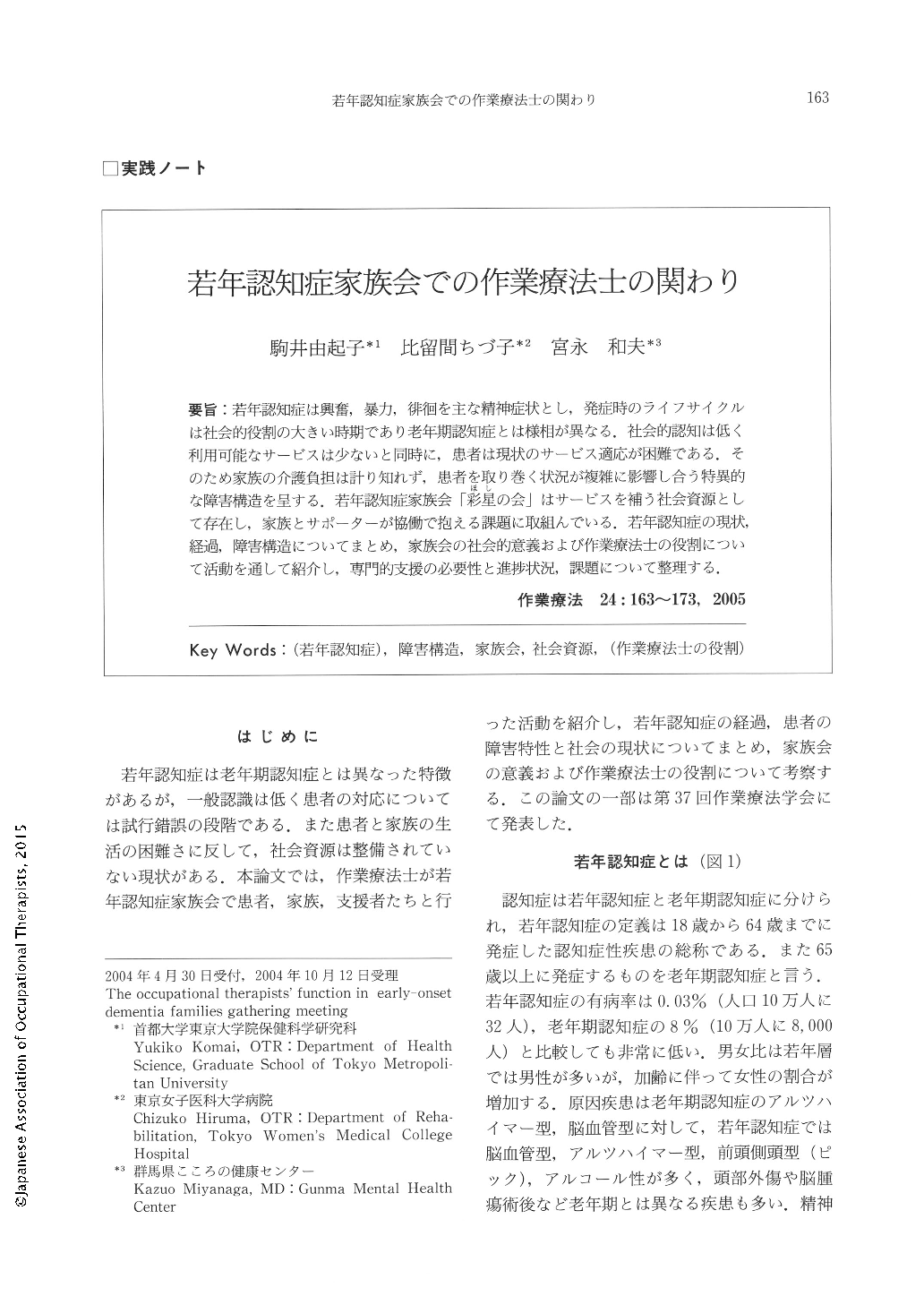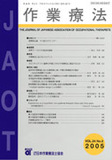Japanese
English
- 販売していません
- Abstract 文献概要
- 1ページ目 Look Inside
- 参考文献 Reference
- サイト内被引用 Cited by
要旨:若年認知症は興奮,暴力,俳徊を主な精神症状とし,発症時のライフサイクルは社会的役割の大きい時期であり老年期認知症とは様相が異なる.社会的認知は低く利用可能なサービスは少ないと同時に,患者は現状のサービス適応が困難である.そのため家族の介護負担は計り知れず,患者を取り巻く状況が複雑に影響し合う特異的な障害構造を呈する.若年認知症家族会「彩星の会」はサービスを補う社会資源として存在し,家族とサポーターが協働で抱える課題に取組んでいる.若年認知症の現状,経過,障害構造についてまとめ,家族会の社会的意義および作業療法士の役割について活動を通して紹介し,専門的支援の必要性と進捗状況,課題について整理する.
Early-onset dementia is different from late-onset dementia. The first difference is that the main psychogenic symptom that early-onset dementia causes excitement, violence and dromomania, the second is that the life cycle in which early-onset dementia patients shoulder important social responsibilities. Not only do these patients have difficulty finding treatment (because what ails them is relatively unknown from a social point of view), but it is also difficult for these patients to adapt to needed welfare services. For this reason, their family members (as care givers) face insurmountable coping problems. There are problems, for example, with those who have psychogenic symptoms, about which welfare services know comparatively little. Therefore, social workers must categorize these patients into a complicated and cumbersome, "special" structure of disabilities.
Family meetings for early-onset dementia, called 'the meeting Hoshi', exist within social resources but make up just a very small portion of early-onset dementia's welfare services. Some families and supporters, however, by sharing their resources, are making a collective effort to make up for this disparity in the social service system.
We have carefully researched the status, progressive stages, and structure of disabilities with regard to early-onset dementia, and we have introduced our proposed activities at the family meeting. We examined the social purpose of the family meeting and the role of occupational therapists, and we have concluded that it is necessary for early-onset dementia to receive rehabilitation from highly experienced professionals.

Copyright © 2005, Japanese Association of Occupational Therapists. All rights reserved.


